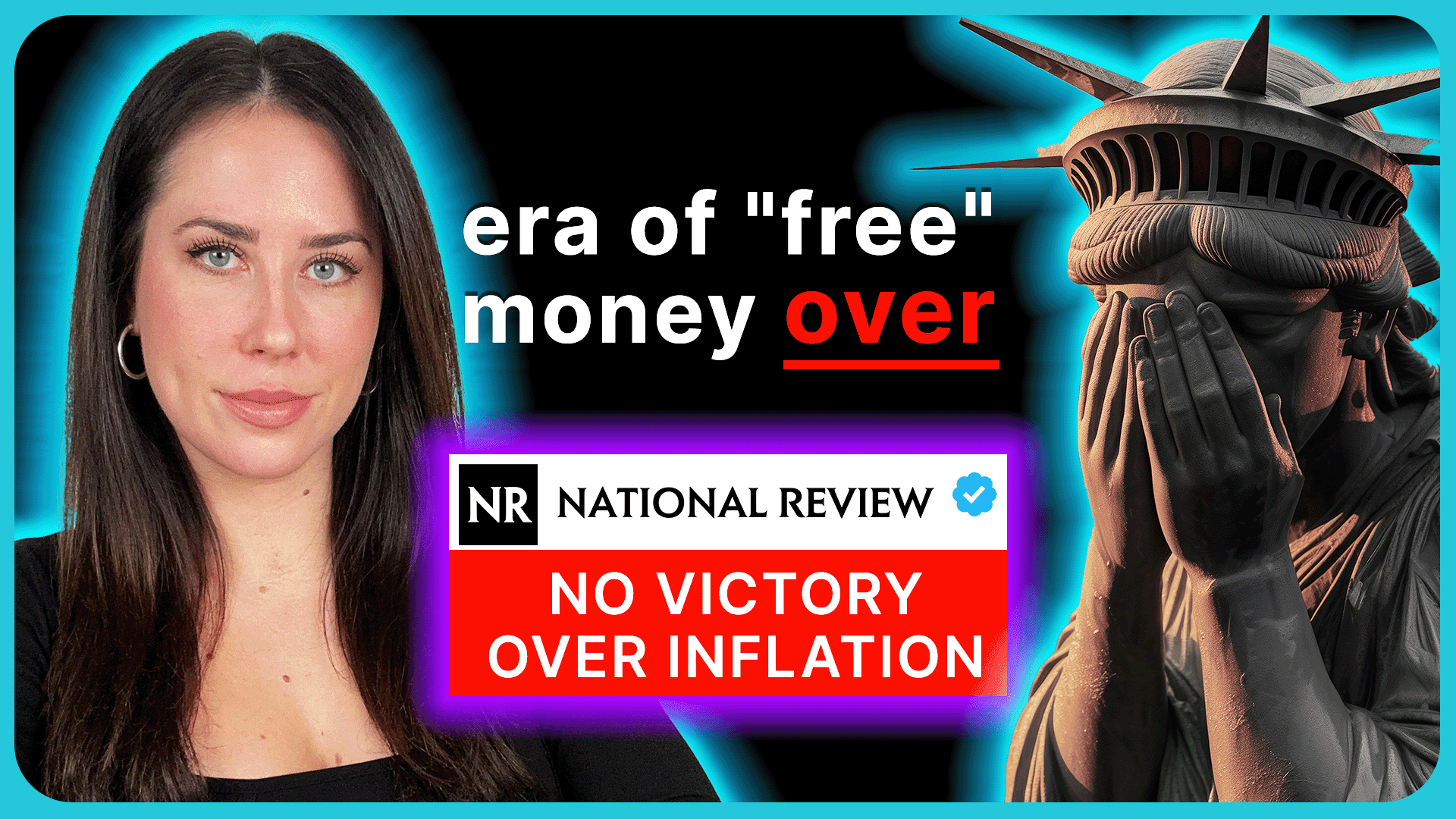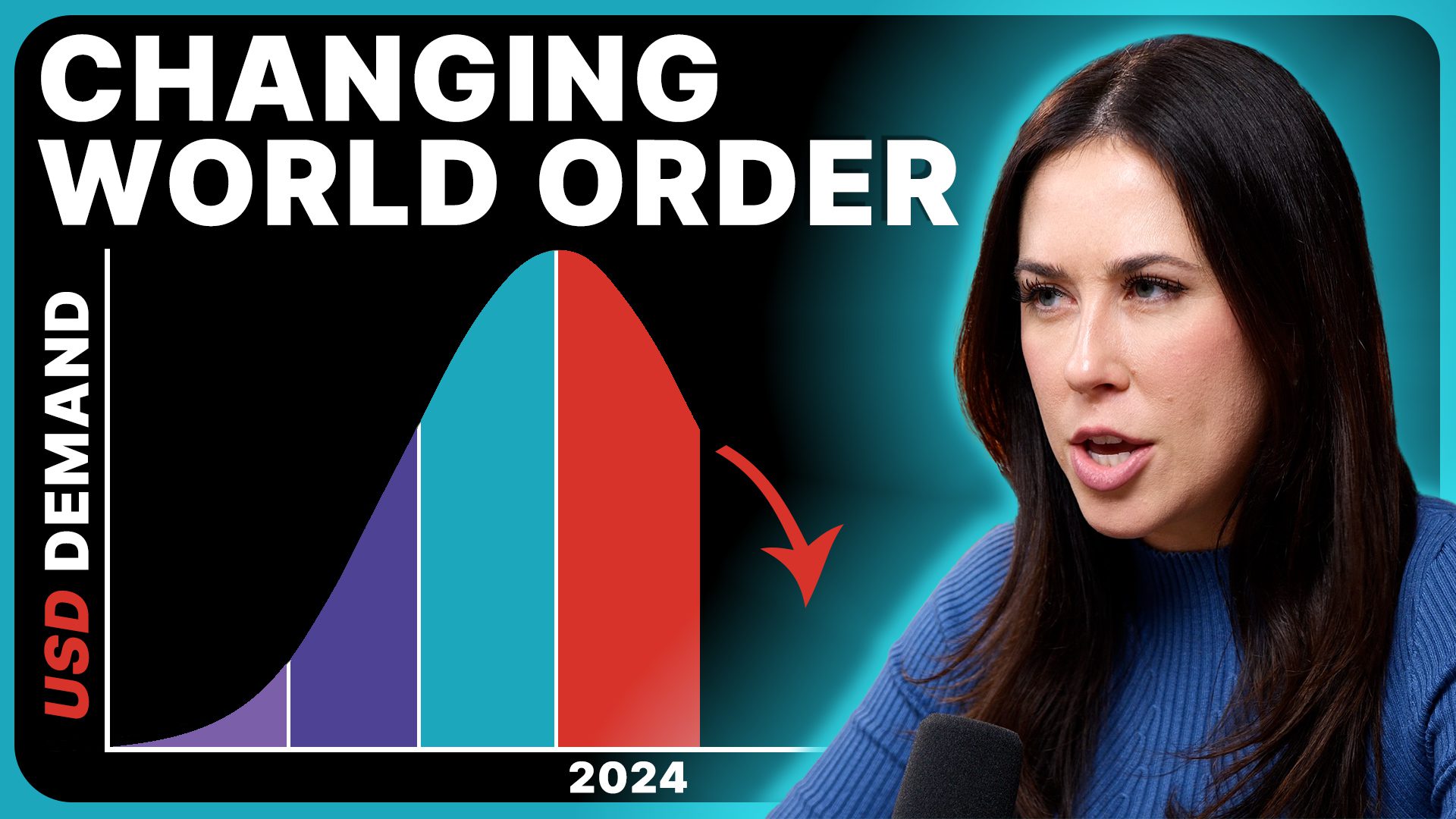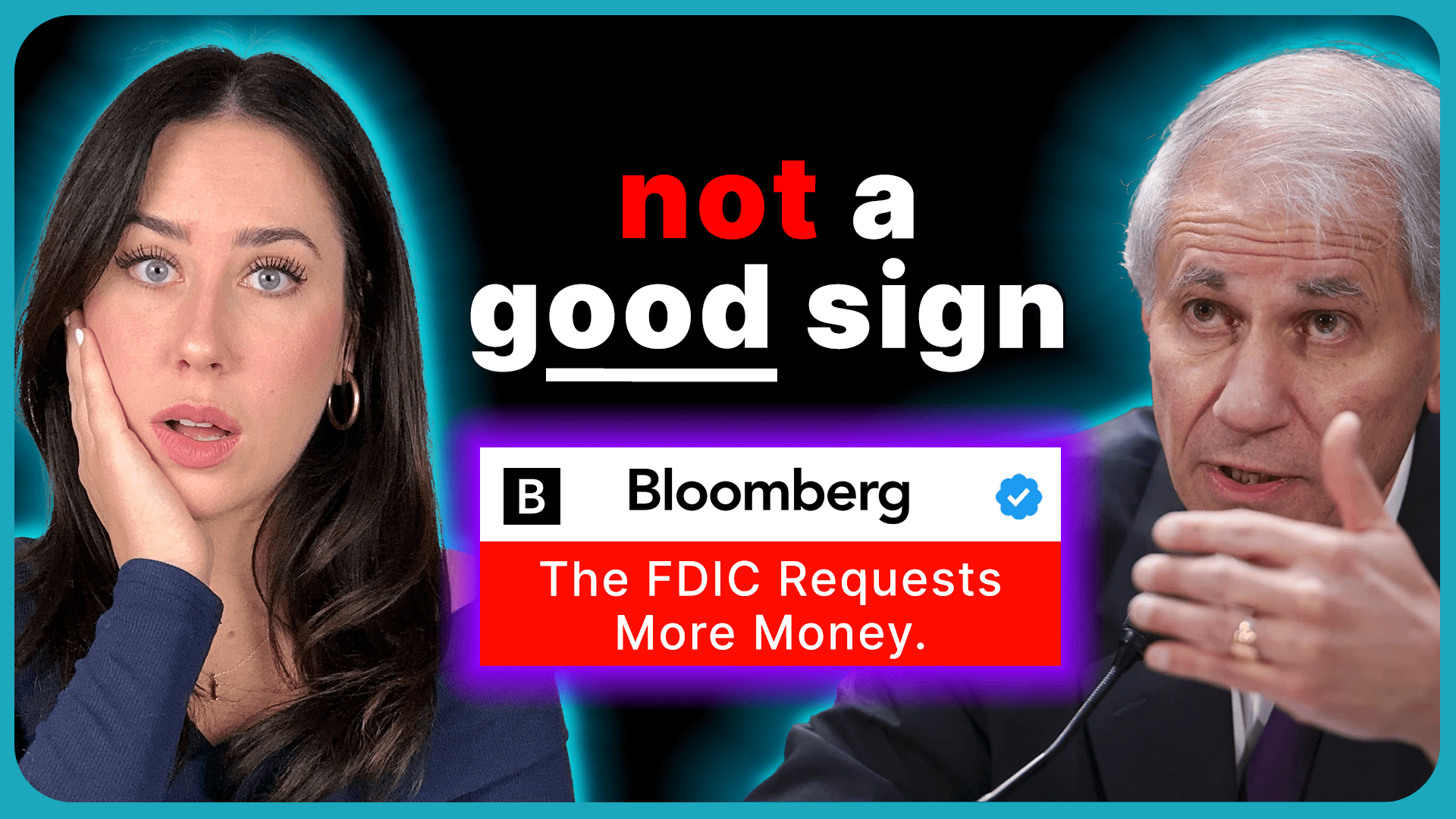NEW $8.9 Trillion Shock: Why the Fed Can’t Cut Rates (Possibly Ever)

Taylor Kenney explores the looming $8.9 trillion government debt maturity facing the U.S. in 2024. Join her as she dissects the implications of dwindling foreign investment, potential rate cuts, and the precarious stability of the dollar.
CHAPTERS:
0:00 $8.9 Trillion US Government Debt in 2024
01:21 Why It Matters To YOU
04:11 BRICS To Undermine US Dollar
06:48 US Debt Over Defense
TRANSCRIPT:
A record breaking $8.9 trillion worth of U.S. government debt is maturing in 2024. That debt, combined with a continuously growing deficit, means that the United States will have to sell roughly $10 trillion dollars of U.S. bonds this year alone.
This comes at a time when foreign investors are rapidly shrinking their U.S. debt holdings and refinancing costs are through the roof.
So what does all of this mean for rate cuts, the economy and the value of your U.S. dollar? We’ll break down all of that and more together. I’m Taylor Kenney with ITM Trading. And this is Taylor Made Economics.
What would happen to the U.S. dollar if there was more government debt than there were buyers? It’s a scenario that would all but insure the collapse of whatever remaining value the U.S. dollar had.
Yet years of high demand and low interest rates have created an artificial confidence that this scenario would never come to be. No matter how high the debt burden climbed.
But what if that day was closer than we thought? An astonishing $8.9 trillion dollars of U.S. debt is maturing this year on top of a projected $1.4 trillion deficit. This means that the government is going to have to do whatever it takes to ensure that there are buyers for all of this debt.
But we’ve seen large deficits and growing debt before, Right. So why does it matter so much that all of this debt is maturing now?
When government debt matures? There are two options. Option one roll over the debt, essentially issue new debt at a current rate. Option two, find the resources to repay the debt. I think we can all agree that the U.S. government is not repaying trillions of dollars of debt any time soon, which means that they will be forced to roll over all of this debt that’s maturing at current rates, which we know are high.
When interest rates increase, the way they have the last few years, the cost of borrowing increases along with it. And before you say while interest rates are coming down this year or all the federal Reserve has to do is lower interest rates to make this borrowing more affordable. It’s not that simple. And in fact, this debt maturing might actually have the opposite effect and keep interest rates higher for longer.
Imagine bond prices and interest rates on a seesaw. As interest rates go up, bond prices go down and vice versa. While it might be beneficial to the U.S. government to have interest rates low because the cost of borrowing is less, it actually makes bonds less favorable for investors and creditors.
Now, historically, this hasn’t been a problem for the U.S., as the United States has been able to take advantage of its privileged position of having the global reserve currency.
The U.S. dollar always would be in demand, allowing the U.S. to get away with murder when it came to borrowing at low rates. But all of that is changing now.
The U.S. Treasury market, the way that the U.S. finances its debt, is having a serious supply and demand issue. The borrowing spree of the last few years has caused supply to skyrocket it all, while demand has been falling in the background.
Holders of the U.S. debt include other countries, central banks, the Federal Reserve and private investors. But the largest buyers, foreign countries, have been slowing their buying in an attempt to move away from the U.S. dollar.
China and Hong Kong combined. One of the largest holders of U.S. debt, have been unloading their U.S. Treasuries for years, reaching their lowest level in the last 15 years.
So where is all of this money going instead and why? If we take China as an example, their central bank, the People’s Bank of China, was the single largest purchaser of gold last year
with ongoing conflicts, economic concerns and a changing geopolitical landscape. It’s no surprise that China would seek refuge in the only true safe haven asset. Gold in their attempt to move away from dependency on the U.S. dollar as the world’s global reserve currency.
This move away from the U.S. dollar and towards gold has been further propelled in recent years by the BRICS coalition of countries who are laser focused on a new world order through dollarization.
Russia, one of the founding BRICS members, has been very vocal about sanctions imposed by the United States. Just last week, in an interview with Tucker Carlson, Russian President Vladimir Putin discussed in detail speaking out against the weaponization of the U.S. dollar, saying that the United States greatest power was the US dollar and using it as a political tool actually is a blow to that power and, quote, a grave mistake.
All of this adding further fuel to the fire of countries, moving away from holding U.S. debt
in foreign countries aside, don’t count on just the Federal Reserve to step up and buy all of this debt either. We’ve seen them do it before, of course, most recently in 2020, when the Federal Reserve stepped in and purchased massive amounts of debt securities in a process called Quantitative Easing, or essentially printing more currency to stimulate the economy.
Obviously, the monetary policy of printing new dollars out of thin air is going to have an impact. Hence the high rates of inflation we’ve seen, which is why the Federal Reserve is now working in the opposite way, offloading their debt in an attempt to counteract their previous actions.
Federal Reserve Chair Jerome Powell said himself last week that we are borrowing from future generations and that this spending is unsustainable.
Now, this isn’t to say that the Federal Reserve wouldn’t step in if absolutely necessary, but to purchase that amount, doubling their balance sheet and then some could cause inflation to come roaring back and create a ping pong ball effect to the economy, which is not what I think they want to have happen. But it might don’t rule it out.
So what we can safely assume is that during this time when demand is low and supply is going to skyrocket, the United States government will have to do whatever it takes to make these bonds more favorable for purchasers, which most likely will mean keeping interest rates high.
And I know that while many are desperate for a reprieve from these high interest rates, it is looking more and more unlikely that things are going to play out in the way that everyone had hoped.
Which is also concerning because we know that if interest rates remain high, the cost of financing this debt is astronomical. This year, the United States will spend more on interest rate servicing debt than on national defense.
And anyone out there who has gotten themselves into trouble with debt before understands just how hard it is to dig yourself out of that hole once you’re in it.
When interest rates are increasing and your payments aren’t. That’s when it feels like you’re treading water and you become desperate. Or in the case of the U.S. government, you’re not even treading water. You’re drowning. As you continue to pile on more and more debt without making any kind of dent at all.
So the question remains, who will buy all of this debt and at what cost to the United States?
Are we finally at the point where the scale tips because of the cost to finance this government debt? The demand is not there the way it used to be and is no longer propping us up,
which means that the United States is losing its dominance as the world’s primary reserve currency. This is a truth that keeps me up at night.
I can feel it. I know you can feel it. The thing that’s different about it right now is the rate at which it’s happening and what we’re going to see this year just as a result of this debt maturing alone
Whatever wealth you have stored in dollar denominated assets is all at risk as a result of this $8.9 trillion of debt maturing this year alone with a growing deficit, lower demand and high rates.
I know this is stressful, believe me, but I also know how important it is to make sure that we are helping get the word out and that everyone is aware and as educated as possible.
It’s only a matter of time for the US dollar. Which is why if you’re new here or you’ve been watching for a while and you finally say enough is enough, I want to make sure that I’m protected.
I want you to go ahead and click on the Calendly link below or scan the QR code and get a strategy in place today.
You already know that we can’t trust the US dollar backed by the full faith and credit of the US government. I trust gold. Gold and silver. A finite, tangible resource with zero counterparty risk. That is the only true store of value.
And like I said, if you want to learn more, it could not be easier. Click the Calendly link below or scan the QR code to get started today.
I so appreciate all of you for being here. We know how important it is to get the word out, so please like, share, subscribe if you’re not already. And as always, thank you so much.
I’m Taylor Kenney with ITM Trading. Until next time.
SOURCES:
https://www.nationalreview.com/corner/10-trillion-in-u-s-government-bonds-for-sale-in-2024/
https://finance.yahoo.com/news/7-6-trillion-us-government-040643412.html
https://www.axios.com/2024/02/08/us-government-debt-gdp-interest-costs
https://www.newsweek.com/china-economic-woes-drive-global-gold-demand-1866231
https://www.richmondfed.org/publications/research/econ_focus/2022/q3_federal_reserve
https://nymag.com/intelligencer/2024/01/jerome-powell-isnt-quite-ready-to-cut-interest-rates.html













